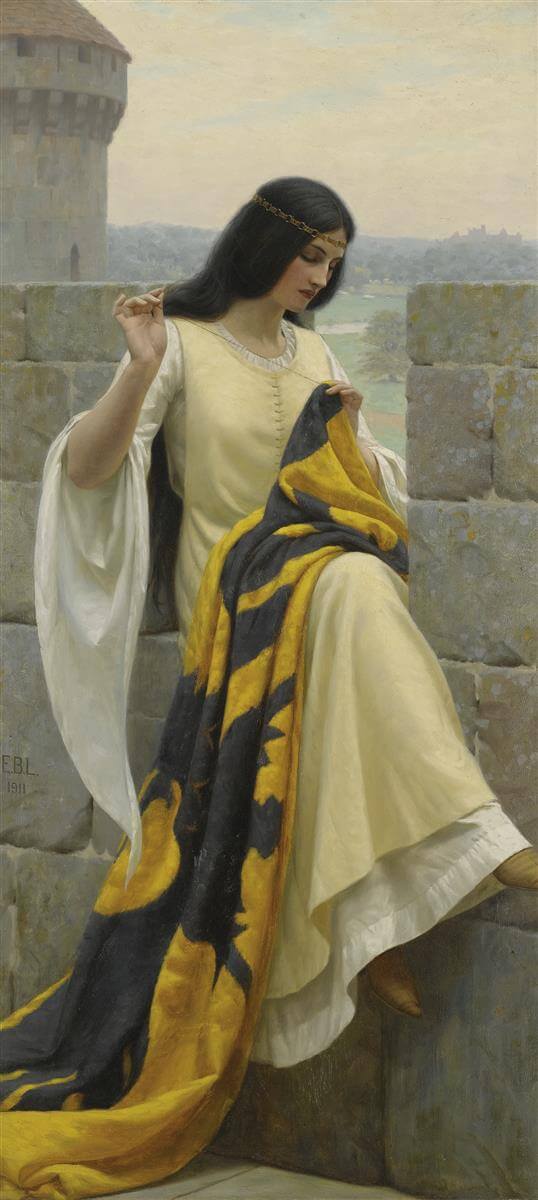Edmund Blair Leighton

Edmund Blair Leighton (1852–1922) was a British painter renowned for his meticulously detailed romantic and medieval scenes that offer a glimpse into bygone eras. His works are celebrated for their exceptional detail and romantic overtones, combining historical narratives with artistic precision to portray a world of gallantry, chivalry, and courtly love.
Leighton was born in London on September 21, 1852, to artist Charles Blair Leighton. He was educated at University College School before attending the Royal Academy Schools. Despite his father’s profession, there are no records of him receiving any formal art training from his father, thus, most of his skills were self-taught or acquired at the academy.
Although Leighton produced paintings throughout his life, his career did not take off until 1878 when his painting “Witness My Act and Seal” was displayed at the Royal Academy. His works frequently depicted medieval chivalric scenes and Victorian women in courtly love situations, which quickly gained him recognition.
Leighton’s art, typically categorized as historical genre scenes, displays a deep understanding of the times he portrayed, partly thanks to his meticulous research. His paintings show an astonishing level of detail in both costume and setting, a testament to his commitment to historical accuracy. Leighton’s works, though not political or particularly philosophical, spoke to the Victorian and Edwardian audiences who admired his detailed approach and the romantic nostalgia of his subjects.
Notable works include “The Accolade,” “God Speed,” and “Call to Arms,” which are among his most recognized paintings due to their romantic narratives, precise detail, and vivid depictions of medieval life.
Leighton married Katherine Nash in 1885, and they had a son and a daughter. Despite his professional successes, very little is known about his personal life, as he largely kept it private. Leighton died on September 1, 1922. While his work is less known to modern audiences, he continues to have a cult following among art enthusiasts who appreciate his romantic and historical scenes.












